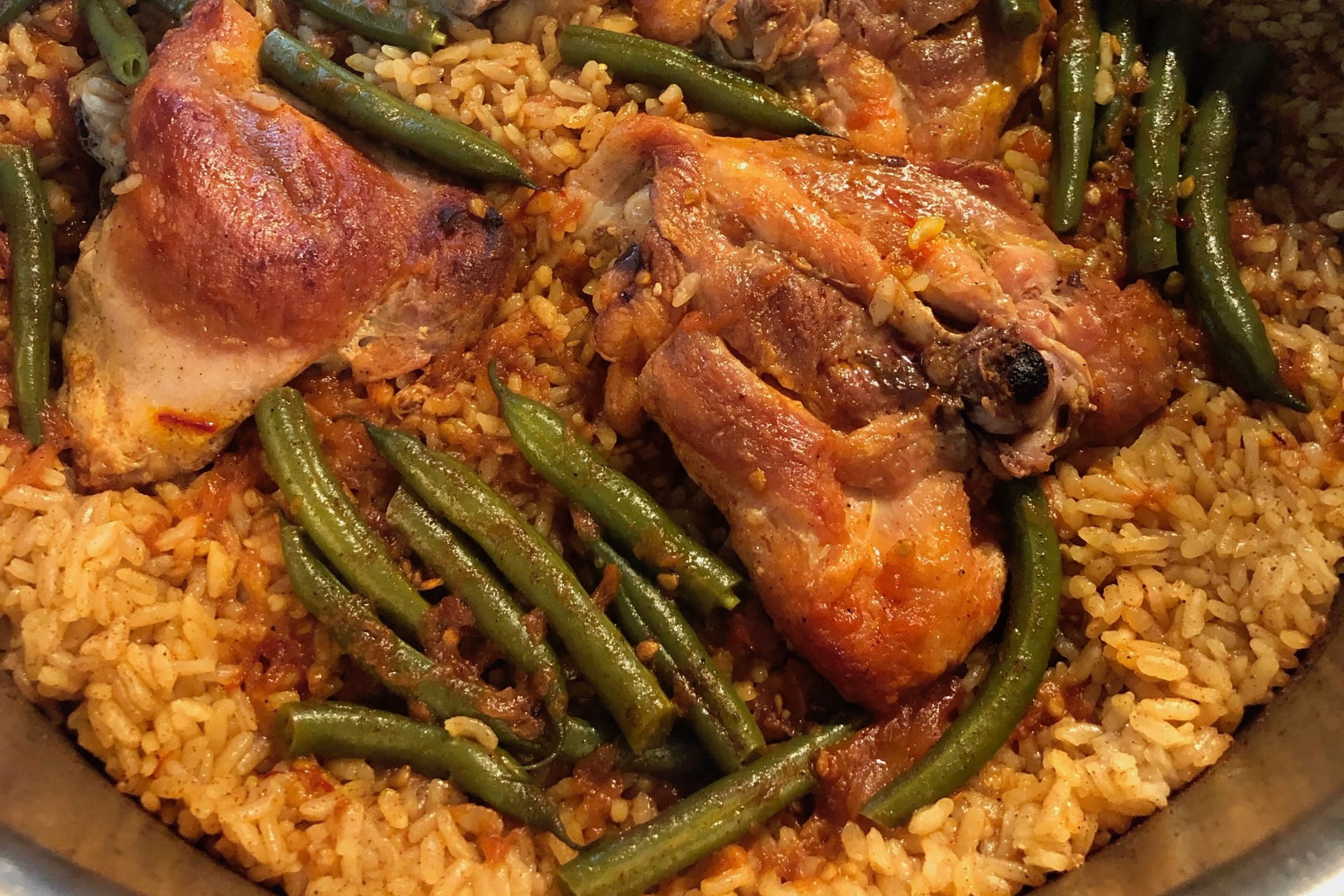Paella: A Recipe for American Cooks
by José F. Martínez
Latest update: March 2025
Valencian paella is perhaps one of Spain’s most famous dishes. Originating from Valencia (as you might have already guessed!), it remains a staple of the local diet. As a child, my family enjoyed paella almost every Sunday. On the rare occasions my mother cooked something different, the rest of us reacted with a mixture of disapproval and resignation.
Authentic Valencian paella follows a relatively strict recipe. However, many rice dishes labeled as “paella” across Spain differ significantly from Valencians’ expectations. Sometimes these variations are so unusual that they surprise us, especially when served to unsuspecting tourists.
Paella recipes often spark lively debates. At outdoor gatherings, it’s common to see one person cooking paella over an open fire with several others standing nearby offering real-time critiques. There’s even a story about the Valencian Parliament debating whether paella should include bell peppers.
Even though I now live in the United States, an ocean away from Valencia, my family and I still proudly prepare and enjoy paella nearly every Sunday. I anticipate (and welcome) criticism from other “paella connoisseurs” (every Valencian feels somewhat like a connoisseur on this topic). Still, this recipe results from years of attending and enjoying numerous paella gatherings, and many Valencians would likely agree with it.

Ingredients (per person)
There are primarily two types of paella: meat and seafood. Many believe that the authentic version is meat-based, typically chicken, rabbit, or both. For those less fond of strong meat flavors, chicken alone is ideal. Rabbit is tasty but can be challenging to find in the U.S., and some may hesitate to eat it.
Here are the ingredients, along with suggested substitutes:
- Olive oil: Essential—nothing else compares to the aroma of chicken frying in olive oil. It is engraved in Valencians’ childhood memories.
- Chicken thigh: 1 piece.
- Dried butter beans: 5 pieces. Traditionally, Valencians use “Garrofó” beans, identifiable by their small black spot. Butter beans are a suitable substitute in the U.S.
- Green beans: 5-10 pieces. Ideally flat “Italian” beans, but round-shaped green beans are fine.
- Sweet paprika: 1 gram. Make sure it’s sweet (“dulce”), not hot or smoked. Pimentón de La Vera is the best one.
- Saffron: A pinch for the whole pan. If saffron isn’t affordable, substitute with food coloring, although you’ll miss out. I always use saffron; my mom always used food coloring.
- Grated tomato: 20 grams. Avoid using too much to prevent acidity.
- Water: 125 cc.
- Salt: 1.5 grams.
- Kokuho pearl rice: 100 cc. In my humble opinion, this rice surpasses traditional Valencian choices such as SOS, La Fallera, or Bomba. If unavailable, choose another pearl rice—avoid long-grain or instant rice.
- Lemon: One wedge.
- Fresh rosemary: A small sprig.
At the risk of generating controversy, let me state that paella does not include garlic, onions, peas, bell peppers, mussels, sausage, or chorizo. Occasionally, snails (“baquetes”) are added, though if rabbit already seems adventurous, snails might not appeal to you.
The Pan
The cooking pan is crucial. In Valencia, we use a wide, shallow pan called a “paella” (“pan” in Valencian). Generally, the shallower, the better. However, a Dutch oven can work well for up to four people and reasonably well for up to eight.
Procedure
Soak the butter beans in water overnight (don’t forget—though I often do). If you forget, boil them for twenty minutes beforehand, or use canned beans (though the canned beans tend to disintegrate).
Heat olive oil (medium temperature). Too much oil will make the dish heavy. Be cautious, as oil loses some viscosity and spreads when heated. Once warm, it should barely cover the bottom of the Dutch oven.
Clean the chicken thighs, removing excess fat but leaving the skin for flavor if desired. Fry chicken until golden and crisp, about 15 minutes per side. Meanwhile, prepare the vegetables and grate the tomato.
Once the chicken is golden, set it aside temporarily. (Valencian pans are wide and concave, allowing vegetables to cook centrally while chicken sits on the perimeter.)
Fry green beans for about three minutes, stirring occasionally. Add paprika and saffron, stir for approximately 30 seconds, then immediately add grated tomato to prevent burning. Cook for one minute, scraping the pan’s bottom to incorporate the flavorful residue.
Return the chicken to the pan and combine with the vegetables. Add water and salt, measuring water depth with a wooden stick—this is crucial.
Let simmer over moderate heat for twenty minutes. Remove the pan briefly, restore the original water level using the stick measurement, return to heat, and adjust salt as needed.
When boiling resumes, taste quickly from a bubble (thus avoiding oil), adjust salt promptly, and add rice before excess evaporation occurs.
Add rice evenly across the pan, gently shaking to distribute. Once boiling resumes, reduce heat to low, cover, and simmer for 25 minutes. This covered method differs from traditional open Valencian pans, which require more water and attention. In our case, simply following Kokuho’s rice instructions yields consistent results.
During the final ten minutes, quickly place fresh rosemary atop the rice and re-cover, allowing the steam to infuse the dish.
Remove from heat, keep covered briefly to enhance flavors and soften grains, then serve with lemon wedges. Many people squeeze the lemon over the rice and mix the juice in, which helps break down fats and oils a little bit and makes the dish more fragrant. I personally love it.
Quick Paella Tip
To save time, substitute organic chicken broth for water and skip the simmering process. This is how I always cook paella at home. Be sure to adjust for salt if the broth already contains some.
Enjoy this authentic taste of Valencian culture. Please feel free to share your stories, questions, or suggestions!
